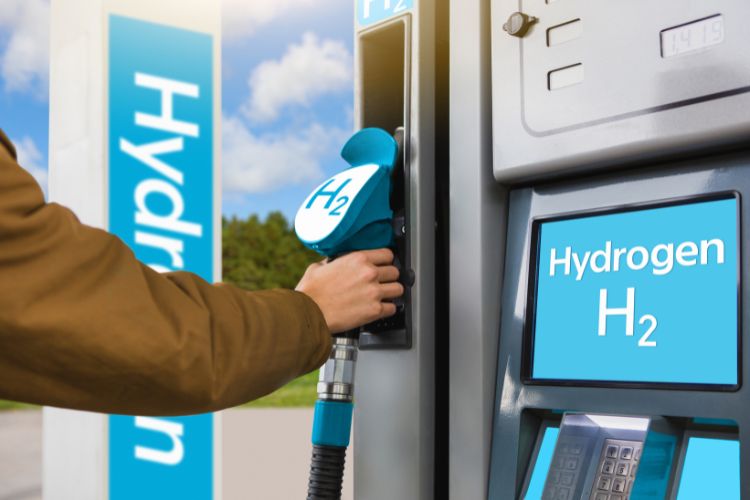Often, a new technology employs other new technologies or depends upon them. The right combination leads to a much better product, greater benefits, and easier or more productive use. Unfortunately, the technologies don’t always come together at the same time. If the EV (electric vehicle) population is to grow at the expected rate, the infrastructure to charge those vehicles must grow even more rapidly, for example.
Another case in point, similar to the EV charging requirements, is for a complete infrastructure of hydrogen fueling stations to be in place in order for hydrogen vehicles to complete with EVs. A study, Hydrogen Vehicles: Key Trends, Segment Analysis & Market Forecasts 2022-2027, from Juniper Research identified hydrogen vehicles as an increasingly viable alternative to BEVs (battery electric vehicles) with a potential for enhanced range and rapid refueling compared favorably with BEVs.
These positives have led to significant investment by car manufacturers, including Hyundai, Toyota, and BMW, in hydrogen systems and this will translate into an increasingly popular and available product over the next five years. Juniper Research predicts that the number of hydrogen vehicles in service globally will exceed 1 million in 2027, up from just over 60,000 in 2022 – a growth of over 1,500%!
In the report, hydrogen vehicles are defined as those that use hydrogen propulsion systems as their onboard fuel. The chemical energy of hydrogen and oxygen reacts with the fuel cell and converts the energy to electricity.
The research forecasts that consumer purchases will account for over 60% of hydrogen vehicles in service globally in 2027. The nascent development stage of many commercial vehicle types and the high average cost of hydrogen‑powered commercial vehicles, at over $70,000 globally in 2022, are key factors limiting their rapid adoption by enterprises.
Additionally, the report identified the low availability of fueling infrastructure as a key challenge for wider adoption but highlighted heavy industry investment as key to reducing this concern over the next five years. The report recommends that infrastructure vendors provide “green” hydrogen, produced using renewable energy sources, to best take advantage of concerns around the environment driving the adoption of alternative fuels.
Another technology advancing in large part due to the implementation of new infrastructure is tracking assets, such as those EVs and hydrogen trucks that are coming, relying on the 5G cell network. Juniper Research, in their report Fleet Tracking & Logistics: Key Trends, Vendor Strategies and Market Forecasts 2022-2027, estimates that global spending on asset tracking by enterprises will increase from $16 billion in 2022 to $45 billion in 2027 – a substantial growth of 184%.
The management and security of high-value assets are becoming increasingly important and demand for technologies that provide real‑time monitoring within the supply chain are more in demand. Asset tracking in this context refers to systems that leverage wireless connectivity to remotely monitor assets’ locations, based on realtime data with the aim of better managing asset condition.
The research predicts that the growing availability and affordability of asset-tracking solutions will drive adoption of managed services among the largest enterprises, especially those that operate their own supply chains for high-value assets. It sees the most sought-after solutions as those which can demonstrate a return on investment by minimizing theft and loss of assets during transit.
The report forecasts that the number of assets tracked will reach 24 billion by 2027, up from 8 billion in 2022. Widely used today, GPS (global positioning system) is a cost‑effective technology, however, the comprehensive network capabilities of 5G must be implemented to monitor assets with the highest values.
Indeed, the report predicts that this increasing reliance on 5G will present significant opportunities for hardware vendors over the next five years. It anticipates that the growing demand for the “always connected” supply chain will drive the interest in 5G-enabled asset-tracking hardware. In turn, supply-chain hardware vendors must focus development on sensors that leverage the data-intensive nature of 5G to provide features such as realtime anti-tampering notifications.
Besides 5G, other technologies are being implemented in the furtherance of asset tracking. One of the fastest-emerging artificial intelligence (AI) technologies, for example, is computer vision and this is being integrated into AI-enabled dash cams. Computer vision allows computers to see and analyze objects in the same way humans do; being able to detect if an object is moving towards or away, if it is in a vehicle’s direct path, and whether it will cause a collision.
AI relies on data to learn about operations and provide insights and predictions. Fleet management systems capture a large volume of data from a wide range of data points which can be pulled into an AI processor. This data can include runtime data, maintenance data, fuel usage data and idle times, and location data. AI can automatically transform Big Data into digestible reports, visual dashboards, and actionable insights that help businesses make decisions.
Want to tweet about this article? Use hashtags #construction #sustainability #infrastructure #IoT #AI #5G #cloud #futureofwork


